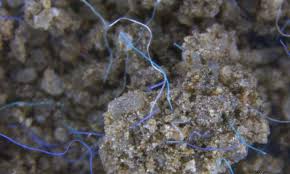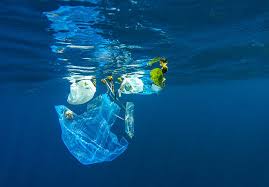
IN WHAT LOOKS like a pristine, remote mountain region, tiny pieces of plastic pollution were found raining down from the sky—raising questions about the global extent of plastic pollution—a first-of-its-kind study has found.
Scientists recorded a daily rate of 365 microplastic particles per square meter falling from the sky in the Pyrenees Mountains in southern France.
“It was incredible how much microplastic was being deposited,” said Deonie Allen, a researcher at EcoLab in the School of Agricultural and Life Sciences in Toulouse, France. There were no obvious sources for the microplastics within 60 miles (100 kilometers), said Allen, the lead author of the study published Monday in Nature Geoscience.
“Microplastic is a new atmospheric pollutant,” Allen said.
Microplastics are very small pieces of plastic waste. Their presence in oceans and waterways has received a great deal of scientific and media attention in recent years. However, only two previous studies have looked for the presence of microplastics in the air. Both were in cities and their results were comparable, says Allen. Microplastics in the air appear to be ubiquitous.These are the most endangered U.S. rivers
“If you go outside with a UV light, set at a wavelength of 400 nanometers, and shine it sideways you’ll see all kinds of plastic particles in the air fluoresce,” she said. “It’s almost worse indoors. It’s all a bit terrifying.”
Allen and colleagues collected microplastics over a period of five months at a meteorological station about 4,500 feet (1,400 meters) above sea level using atmospheric deposition catchers that look like tall funnels. They counted and analyzed the plastic fragments, fibers, and films at the bottom of the collectors that were less than 300 microns in size. The human hair averages between 50 and 70 microns in diameter. The smallest particle a human eye can see is about 40 microns.
More than 50 percent of the microplastics found at the station were fragments less than 25 microns in size.
Researchers studied wind patterns to find a source of the microplastics collected, but found none within a 60-mile radius of the region—which is sparsely populated and without industrial, commercial, or large agricultural activities. A quantity of orange quartz-like fine dust was also collected, said co-author Steve Allen. This was likely Saharan dust, as past studies have shown such dust particles, which are as large as 400 microns, can travel thousands of miles. But “no one knows how far microplastics can travel,” he added.
Scientists have warned we are creating a “plastic planet”. Some 420 million tons of plastics were produced in 2015, up from just over two million tons in 1950. Over this 65-year period roughly six billion tons ended up either in landfill or in the natural environment, a 2017 study estimated. Plastic waste that starts out as bottles, packaging, and so on degrades over time to microplastic particles or much smaller nanoparticles. One study estimated there are 15 to 51 trillion microplastics particles floating on the surface of the oceans. A trillion is one thousand billion. A trillion seconds is nearly 32,000 years.
People are exposed to microplastics through food and air, but the health effects are unknown, said Stephanie Wright, a researcher at the Centre for Environment and Health at King’s College London in the United Kingdom.
“We’ve only recently recognized human exposure to microplastics through the air,” said Wright, who wrote a detailed review article on human health and microplastics in 2017.
What is known is that microplastics smaller than 25 microns can enter the human body through the nose or mouth and those less than five microns can end up in lung tissue. “We do know that other types of small particles do have health impacts,” Wright said.
There is a great deal of concern about fine particulates in the air formed by burning fossil fuels, including black carbon or soot. These have been linked to a wide range of health impacts from asthma to heart attacks to impairing children’s memory and IQ. Most countries have air pollution standards to limit the volumes of particles less than 10 microns, and especially those below 2.5 microns, respectively known as PM 10 and PM 2.5 standards.
It’s also known that microplastics tend to be sticky and can accumulate heavy metals like mercury and persistent organic pollutants (POPs), including brominated flame retardants and polycyclic aromatic hydrocarbons (PAHs). Those materials have known health impacts, said Wright.
The volume of microplastics in the environment is likely going to increase with the rising amounts of plastics being produced, including synthetic textiles, the scientists warn. Plastics are now being used in roads, bricks, concrete, paints, and a host of other things that might not always be obvious to the public. Yet “there’s too much we don’t know about microplastics in the environment,” Wright said.
Far less is known about nanoplastic particles. Nano means really, really small: A billion nanoparticles can fit on the head of a pin.
What about nano particles?
“No one should be surprised that microplastics are everywhere,” said Roman Lehner of the University of Fribourg in Switzerland. Nanoplastics are also everywhere but the technology to detect them doesn’t yet exist, said Lehner, who is working on the problem.
Nanoparticles can have markedly different chemical and physical properties than the same materials at micro or larger sizes. One of the unique characteristics of nanoplastics is that because they are so small more atoms are on the surface of a particle compared to its volume. This makes them more chemically reactive. The potential risks to human health and the environment of nanoplastic particles maybe different from microplastics, said Lehner, who co-authored a new review of the potential risks.
Lab studies have shown adverse impacts of nanoplastics on aquatic organisms. Studies have shown that polystyrene nanoplastics ingested by aquatic organisms passed through cell walls. This appeared to change behavior and affected endocrine function of fish and other marine species. Lab experiments have also shown nanoplastics cross cell walls in samples of human intestines.
HOW TO ELIMINATE SINGLE-USE PLASTICS ON VACATION
Even as more research is needed it would be prudent to use fewer plastics, said S. Allen. Single-use plastics like shopping bags and straws need to be eliminated. Recycled plastic just delays its degradation into microplastics, so it is far better to reduce plastic consumption, he said.
As for bioplastics or biodegradable plastics? They still turn into microplastics you can’t see, S. Allen said.
Plastics and climate
Climate change is yet another reason to reduce plastic consumption, a new study published at the same time warns. Nearly all plastics are made from fossil fuels and this industry resulted in emissions amounting to 1.7 billion metric tonnes of CO2 in 2015, according to a new study in Nature Climate Change. With volumes of plastics produced doubling every decade, by 2050 CO2 emissions could reach 6.5 billion tonnes, or about 15 percent of the global carbon budget.
If the plastics industry were a country it’d be the fourth largest CO2 emitterbehind China, the U.S., and India. However, aggressive application of renewable energy, recycling, and biomass as a feedstock could keep emissions in 2050 on par with 2015 levels, the study noted. That said, there would also be four times as much plastic being produced.
Article Credit:NG

